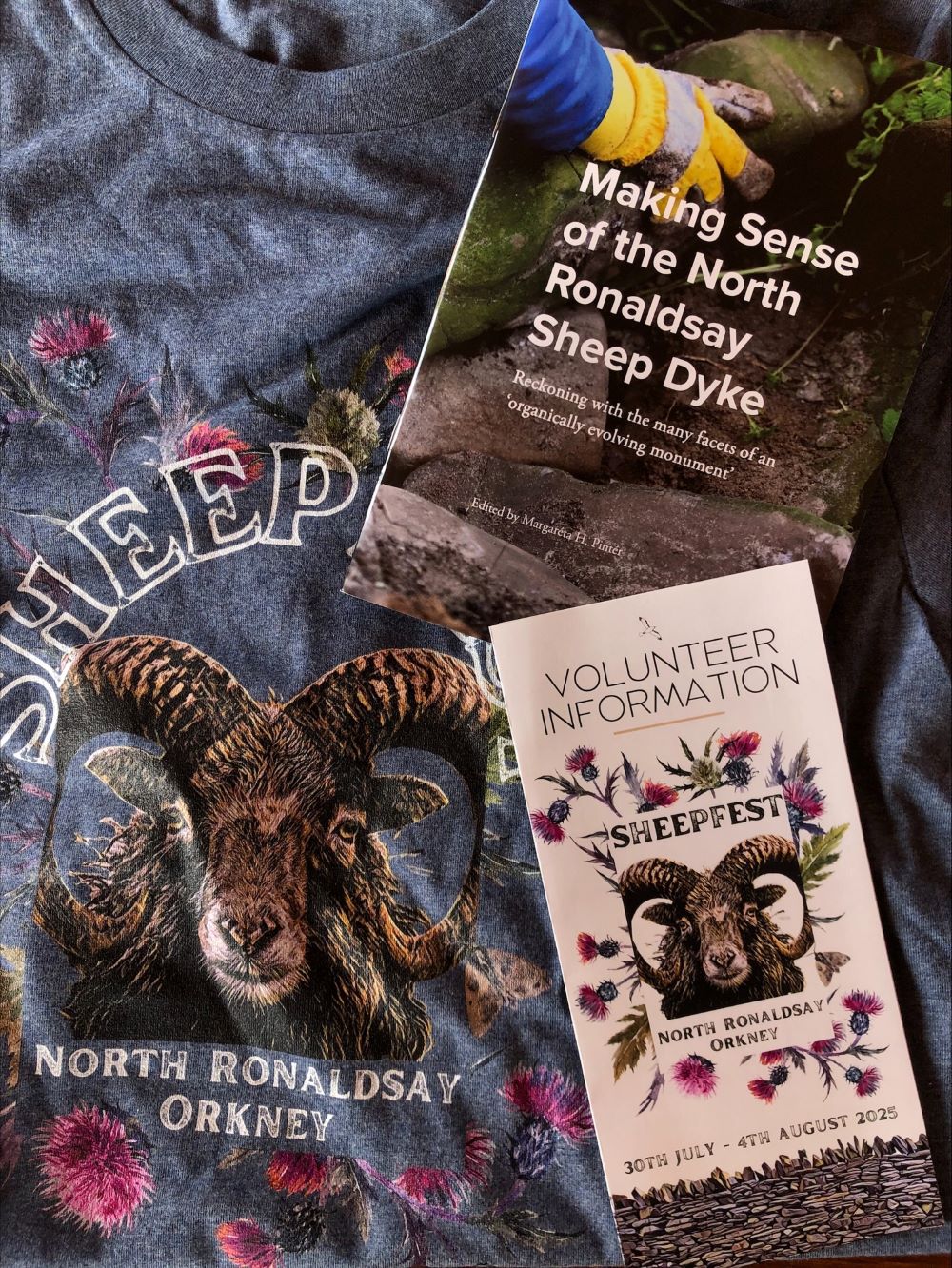INS PhD Researcher Published in North Ronaldsay Booklet
University of the Highlands and Islands Institute for Northern Studies PhD researcher Niamh Mackenzie discusses how the continued maintenance of the unique North Ronaldsay drystane dyke can be seen as intangible cultural heritage in the booklet, 'Making Sense of the North Ronaldsay Sheep Dyke'.
The island of North Ronaldsay is the northern most island of Orkney and is known for its characteristic seaweed eating sheep, bird observatory and a drystone wall or dyke that encircles the whole island.
The North Ronaldsay Sheep Dyke encircles the island and is estimated to be 13 miles long, although the precise length of the structure is unknown. It was built to keep the sheep on the beach and is maintained by the local islanders and volunteers who travel from all over the world to help keep the dyke in fine fettle at the North Ronaldsay Sheep Festival.

In the past each croft was responsible for maintaining a specific length of dyke. That is now impossible due to the depopulation experienced in the island, but dyke maintenance, sheep keeping and the annual Sheep Festival remains a deeply communal affair.
In the section entitled 'Traditional Craft', Niamh discusses the fact that "the process of drystane dyking is a manual skill tied to a creative process that requires synergy between the craftsperson, their material and the environment in which it is practiced." It is an example of living heritage that continues to evolve as the island and its community evolves and adapts to new challenges.
The booklet is edited and written by Margaréta H. Pintér (University of Copenhagen, The Saxo Institute) and can be downloaded from our blog.